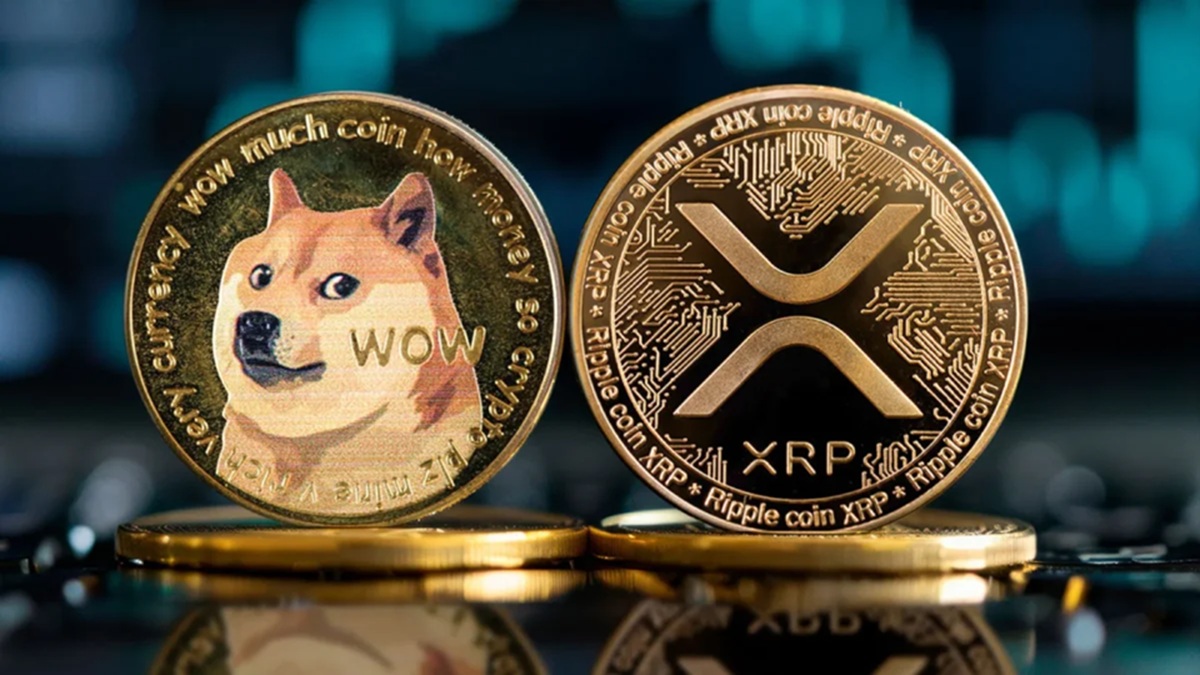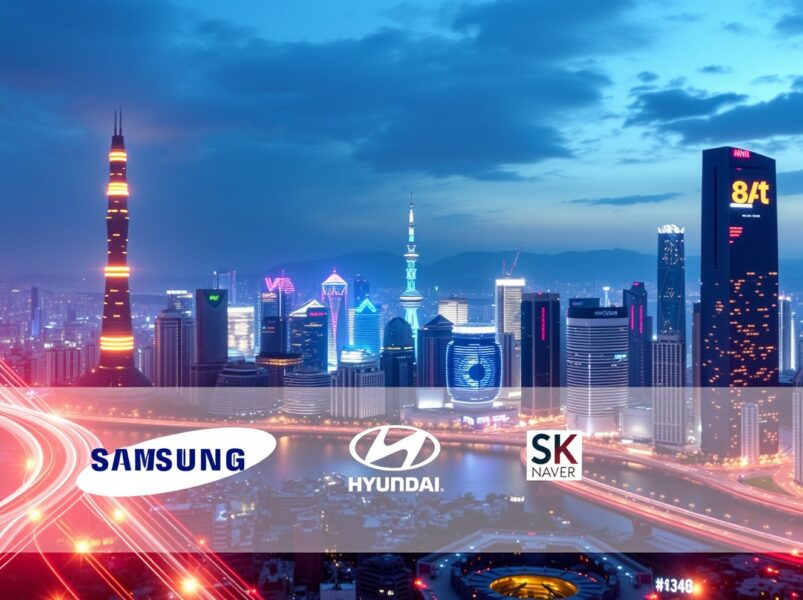Nvidia AI Ignites Revolutionary Partnerships in South Korea’s Tech Future
BitcoinWorld Nvidia AI Ignites Revolutionary Partnerships in South Korea’s Tech Future The digital economy, fueled by rapid technological advancements, continues to reshape global industries, with artificial intelligence (AI) at its core. For those immersed in the cryptocurrency world, understanding the foundational shifts in AI development is crucial, as these innovations often precede breakthroughs in decentralized AI, blockchain scalability, and even the valuation of tech-heavy assets. A recent seismic event in the AI landscape, featuring Nvidia and South Korea’s tech giants, signals a monumental leap forward, promising to redefine not just industrial processes but potentially the very infrastructure upon which future digital economies, including crypto, will operate. Nvidia AI: Powering South Korea’s Ambitious Vision In a move that underscores South Korea’s commitment to becoming a global AI powerhouse, Nvidia CEO Jensen Huang recently embarked on his first visit to the nation in fifteen years. This visit was not merely ceremonial; it was a strategic unveiling of new plans designed to deepen collaboration with key Korean tech companies, including Hyundai Motor, Samsung, SK Group, and Naver. The timing, coinciding with the APEC Summit 2025, highlighted a significant expansion of the partnership between Nvidia and the South Korean government. This alliance aims to significantly boost the country’s AI infrastructure and enhance its physical AI capabilities. This announcement followed closely on the heels of new technology deals signed between the U.S. and both Japan and South Korea. These agreements aim to strengthen strategic ties and foster collaboration on critical emerging technologies. The focus areas include AI, semiconductors, quantum computing, biotechnology, and 6G, demonstrating a coordinated effort to advance technological leadership across allied nations. South Korea’s government officially confirmed its intention to acquire over 260,000 of Nvidia’s latest GPUs to meet the escalating demands of its AI sector. A substantial portion, approximately 50,000 GPUs, will be allocated to public initiatives. These include the development of indigenous AI foundation models and the establishment of a national AI data center, laying the groundwork for sovereign AI capabilities. The remaining 200,000+ GPUs are earmarked for major corporations such as Samsung, SK Group, Hyundai Motor Group, and Naver. This distribution is set to accelerate AI-based manufacturing innovation and the development of industry-specific AI models across various sectors. How Will Samsung AI Reshape Manufacturing and Connectivity? Samsung, a long-standing partner of Nvidia for over 25 years, announced ambitious plans to construct an AI Megafactory. This pioneering facility, developed in collaboration with Nvidia, aims to embed AI into every phase of Samsung’s manufacturing processes, spanning semiconductors, mobile devices, and robotics. The Megafactory will leverage more than 50,000 Nvidia GPUs and the Omniverse platform, creating an intelligent network capable of real-time analysis, prediction, and optimization of production workflows. This initiative is a testament to the transformative power of AI in modern industrial operations. Beyond manufacturing, the collaboration extends to next-generation memory technology. Nvidia and Samsung are jointly developing HBM4, the cutting-edge memory designed to power future AI applications, ensuring that the hardware infrastructure can keep pace with AI’s accelerating demands. Furthermore, Nvidia is partnering with Samsung and three major Korean telecom operators—SK Telecom, KT, and LG Uplus—along with ETRI (Electronics and Telecommunications Research Institute) to co-develop AI-RAN. This innovative technology combines mobile base stations with AI to significantly boost performance and reduce battery consumption. Under a new agreement, these partners will jointly develop next-generation AI-RAN and establish a global testbed, positioning South Korea at the forefront of 6G technology. Driving Future Mobility: The Role of Hyundai AI Meanwhile, Hyundai Motor Group and Nvidia are forging a powerful alliance to build advanced AI infrastructure and propel technologies in physical AI. This partnership is strategically focused on three core areas: autonomous mobility, smart factories, and robotics. Their collaboration extends to high-performance GPU supply and investment, ensuring that Hyundai has the computational muscle required for its ambitious projects. According to Nvidia, the companies will deploy 50,000 NVIDIA Blackwell GPUs. These powerful processors will be critical for integrated AI model training, validation, and deployment across Hyundai‘s initiatives. Furthermore, the partnership includes plans to establish AI research centers within South Korea, with the explicit goal of strengthening the country’s physical AI industry. Jensen Huang emphasized the profound impact of AI, stating, “AI is revolutionizing every facet of every industry, and in transportation alone — from vehicle design and manufacturing to robotics and autonomous driving — Nvidia’s AI and computing platforms are transforming how the world moves.” He added, “Together with Hyundai Motor Group — Korea’s industrial powerhouse and one of the world’s top mobility solutions providers — we’re building intelligent cars and factories that will shape the future of the multitrillion-dollar mobility industry.” Building Robust Korean AI Infrastructure with SK and Naver SK Group, the parent company of SK Hynix, is joining forces with Nvidia to establish Asia’s first enterprise-led manufacturing AI cloud. This groundbreaking initiative will leverage Nvidia’s advanced simulation and digital twin platforms, providing unprecedented access to the government, public institutions, and domestic startups. This move is designed to democratize access to powerful AI tools, fostering innovation and accelerating the adoption of AI across South Korea’s industrial landscape. Naver Cloud, the cloud computing division of the Korean search engine Naver, is also deepening its collaboration with NVIDIA. Their focus is on developing a next-generation “Physical AI” platform, designed to seamlessly bridge the gap between the physical and digital worlds. Naver Cloud plans to deploy this cutting-edge AI infrastructure across vital industries, including semiconductors, shipbuilding, energy, and biotechnology. The overarching goal is to accelerate the integration of AI solutions specifically optimized for real-world industrial environments. Hae-jin Lee, founder of Naver, articulated this vision, stating, “Just as the automotive industry is transitioning to SDVs, the era of ‘Physical AI,’ where AI operates directly within real industrial sites and systems, is unfolding.” The Strategic Importance of High-Performance AI GPUs The sheer number of AI GPUs being secured by South Korea—over 260,000 in total—underscores their critical role in the current technological arms race. GPUs are the workhorses of modern AI, providing the parallel processing power necessary to train complex neural networks and run sophisticated AI models. This massive influx of computational power will not only fuel the ambitious projects of Samsung, Hyundai, SK Group, and Naver but also establish South Korea as a leading hub for AI research and development. The strategic allocation of these GPUs, both for public initiatives and private enterprise, ensures a comprehensive national effort to harness AI’s potential. This aggressive investment in AI GPUs positions South Korea to drive innovation across diverse sectors, from advanced manufacturing and autonomous systems to telecommunications and cloud services. The partnerships highlight a broader trend: the seamless fusion of AI and hardware across industries. These collaborations demonstrate how global tech leaders are joining forces to engineer the next generation of intelligent systems, creating an ecosystem where AI can thrive and deliver tangible benefits. FAQs on Nvidia’s South Korea AI Expansion Who is Jensen Huang?Jensen Huang is the co-founder, president, and CEO of Nvidia, a leading technology company known for its graphics processing units (GPUs) and AI computing platforms. Which South Korean companies are partnering with Nvidia?Key partners include Hyundai Motor, Samsung, SK Group (including SK Telecom), and Naver (Naver Cloud). What is the significance of Nvidia’s visit to South Korea?It marks a major expansion of Nvidia‘s AI collaborations in South Korea, involving significant GPU commitments and joint development projects for advanced AI infrastructure and applications. What is the AI Megafactory being built by Samsung and Nvidia?It’s a facility designed to integrate AI into every stage of Samsung’s manufacturing processes for semiconductors, mobile devices, and robotics, using over 50,000 Nvidia GPUs and the Omniverse platform. What is AI-RAN?AI-RAN (Artificial Intelligence-Radio Access Network) combines mobile base stations with AI to improve network performance and reduce power consumption, crucial for 6G development. How many GPUs will South Korea secure from Nvidia?Over 260,000 of Nvidia’s latest GPUs, with 50,000 for public initiatives and over 200,000 for companies. What is “Physical AI”?Physical AI refers to AI systems that operate directly within real-world industrial sites and physical systems, connecting the physical and digital worlds for enhanced automation and optimization. Naver Cloud is collaborating with Nvidia on this. Conclusion: A New Era for South Korea AI The extensive collaborations between Nvidia and South Korea’s technology giants—from Samsung‘s AI network initiatives and Hyundai‘s software-defined vehicles to SK Group‘s industrial AI applications and Naver‘s cloud and AI services—mark a pivotal moment. These partnerships exemplify the profound fusion of AI and hardware across diverse industries, signaling a new era of intelligent systems. This strategic alignment not only solidifies South Korea’s position as a global leader in AI innovation but also demonstrates how major tech players are proactively shaping the future of technology. For the crypto community, these advancements in core AI infrastructure and applications lay the groundwork for more sophisticated decentralized AI solutions and could significantly impact the broader digital landscape, making these developments critical to watch. To learn more about the latest AI market trends, explore our article on key developments shaping AI features. This post Nvidia AI Ignites Revolutionary Partnerships in South Korea’s Tech Future first appeared on BitcoinWorld.
Coinstats2025/10/31 21:40 

